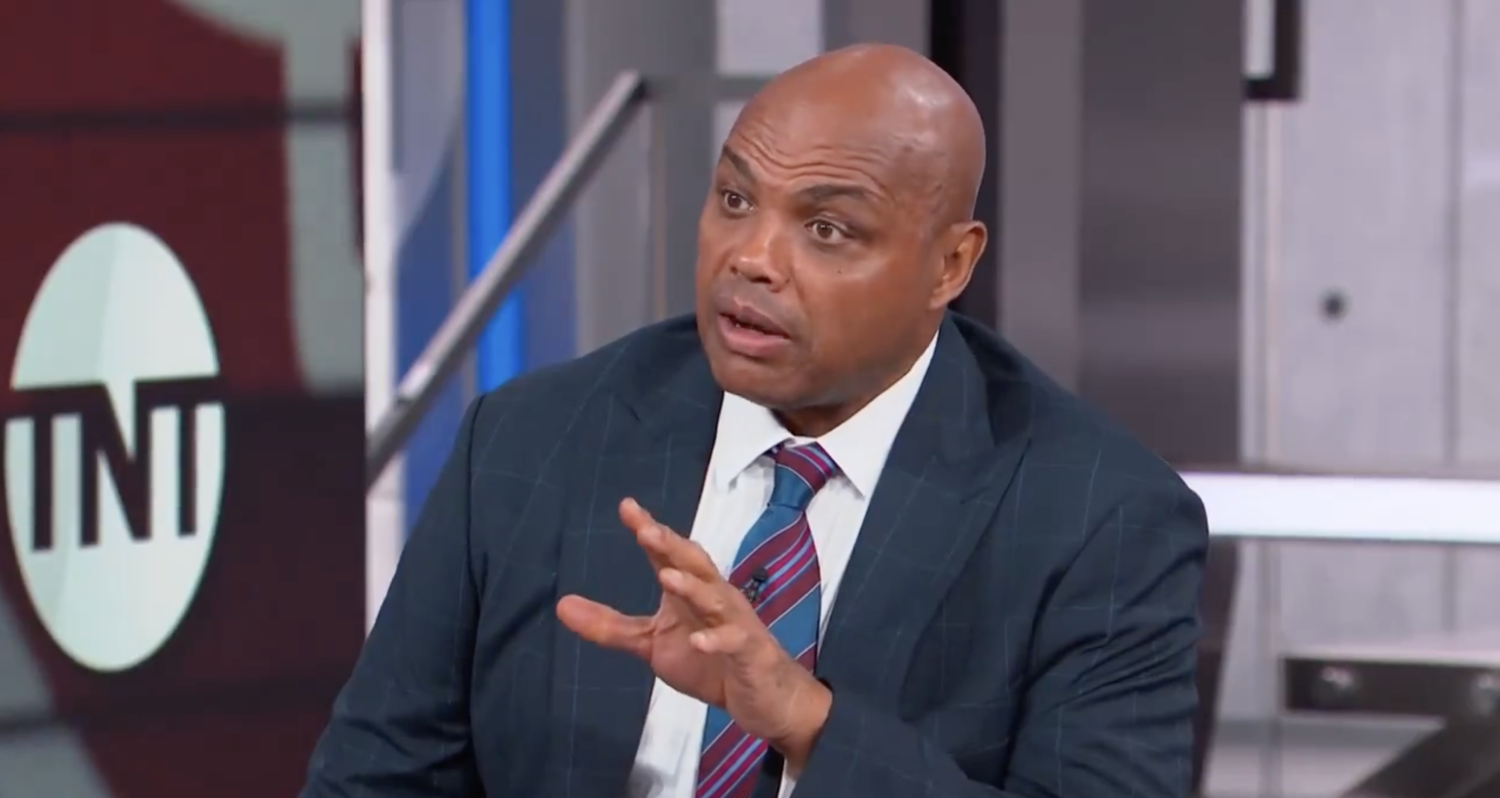ESPN president John Skipper (who recently signed a contract extension through 2021) appeared at the Sports Video Group Summit in New York Tuesday and answered plenty of questions in an on-stage “Keynote Conversation,” discussing the company’s use of new viewer metrics such as Nielsen Total Audience, their forthcoming redesigned app and over-the-top ESPN Plus service, criticism of their NBA rights deal, and more.
One of the key themes of Skipper’s comments was challenging public narratives about ESPN, including declining viewership. He said the recent shift to Nielsen Total Audience numbers (which incorporate both streaming viewers and out-of-home viewers) means ESPN is actually up year over year. ESPN was the first customer for this service (although others have followed), and Skipper said that’s been a valuable and important move for them.
“We think the single most important thing to measure is our total audience for our linear presentations,” he said. “We judged that we would be the greatest beneficiary of this, and this is accurate. …We don’t have less people watching ESPN than last year, we have more. They’re just watching in different ways.”
Skipper said bringing in the total audience numbers shows improvement for ESPN rather than decline.
“It raised our audience year over year 3 per cent total day 14 per cent in prime time,” he said. “We’ll go into the market and sell off this new currency because it is going to be accepted by marketers. …You add all this together and our audience is bigger than ever.”
He said those numbers are important not just for the raw viewership, but for who’s watching.
“Most importantly, 46 per cent of those watching in those new ways are millennials. So the narrative that millennials aren’t watching TV isn’t accurate. They’re just watching in different ways.”
It should be noted that out-of-home viewing has boosted other sports broadcasters as well, and that some advertisers may argue they’ve already been paying for this audience before it was counted. But the out-of-home and streaming boosts still seem positive for ESPN, and they fit into the company’s overall digital plans.
They’re launching a new version of the ESPN app this spring, which will provide some content to everyone, more content with a pay-TV authentication, and more content still (either in addition to or without a pay-TV subscription) for those who subscribe to the new ESPN Plus over-the-top service. Skipper said the new app is something they’ll market to all consumers, not just cord-cutters.
“The new version of the ESPN app is going to be the best way to consume the totality of ESPN in the future,” he said.
Skipper discussed their shift from multiple apps down to two; a main ESPN app and an ESPN Fantasy app (which itself recently combined the other sport-specific ESPN fantasy apps). He said that’s part of a bigger strategy that less is more in the app world.
“At one point, we had 100 apps. Every show had an app,” he said. “What we’ve learned is best is fewer, bigger apps.”
As per the ESPN Plus service, Skipper had more to say about it, touching on how it will have over 10,000 extra live events and additional documentary content. He sees it not necessarily as an ESPN replacement, especially as much of their content will still be tied to pay-TV logins, but as a “complementary product.”
“It’s a way to take all that you love about ESPN and add more to it,” Skipper said. “It will have a sort of Netflix-like aggregation of multi-part documentary series, visits behind the scenes.”
The latest
“This strategy is about providing more content for sports fans,” he said, adding that there were 2,000 hours of total sports content available to U.S. viewers when ESPN launched in 1979. “This year, we did 65,000. Next year, we’ll do 95,000.”
He mentioned that ESPN Plus will be a monthly service, but there will be savings if people want to sign up for a year.
“We will certainly be charging a monthly fee with a yearly price that is a discount.”
Skipper said the digital moves and the launch of ESPN Plus should help ESPN regardless of how the market moves in the future, whether that’s to more total cord-cutting and OTT subscriptions, more people moving to digital multichannel video programming distributors (MVPDs) such as SlingTV and DirecTV Now, or people sticking with traditional cable and satellite services.
“What we’re really preparing is to be able to survive,” he said. “We can adapt, we can move our content around as necessary.”
Skipper said he doesn’t know exactly where things will go, but that diversifying should help protect ESPN down the road.
“If I could see the future, I’d be with Brent Musburger in Las Vegas,” he said. “We can’t see what the future is, but we can see the options in the future, and we can prepare to be ready whatever they are. …It’s providing us with the platforms to adapt as the world evolves. …Drive the value out of the traditional system, supplement with digital MVPDs, create a OTT service of your own.”
As per those digital MVPDs, Skipper said they’re helping ESPN overcome the tide of traditional subscriber losses.
“What we have begun to see, and we believe we’ll continue to see this trend, is that the digital MVPDs are having a significant effect when it comes to offsetting subscriber losses.”
We can’t know that for sure from the outside yet, given that Nielsen only includes a tiny sample of digital MVPD homes in its cable coverage estimates, but it’s certainly interesting that ESPN figures (Disney CEO Bob Iger took a similar tack recently) continue to promote them as compensating for traditional losses. That speaks to the growing importance of these digital MVPDs.
But subscriber losses are only one area where ESPN has taken criticism. Another one is rising rights fees, especially for their NBA contract. This summer, Sports Business Journal‘s John Ourand reported that several key ESPN executives didn’t like that deal when it was struck back in 2014. Skipper has regularly pushed back at that narrative, though, and he did so again Tuesday, taking a general question about sports leagues’ evolution and using it to argue for the value of their NBA deal.
“The NBA is dramatically ascended and doing great,” Skipper said. “The ridiculous notion that we misunderstood the market for the NBA…we’re in the third year of a 10 year deal for the NBA, and it is a spectacular deal. …Let me clue you in to a little secret; we can afford it. We did not misunderstand the market. …That is not a mistake. That is an excellent deal that will serve us well over the term.”
It’s not just about games for ESPN, though. Studio shows remain a focus, especially with the new South Street Seaport facility in New York that will host Mike Greenberg’s Get Up, as well as plenty of other shows. Skipper said the goal for ESPN in this era is not wall-to-wall studio shows, but a smaller number of studio shows with more resources behind them.
“We think if games sort of aggregate our biggest audiences, daily studio shows provide relevance,” he said. “In the medium term, we’re going to do less studio but make bigger bets.”
Skipper cited the forthcoming Get Up (with Greenberg, Michelle Beadle and Jalen Rose) as a smart investment for ESPN, as research suggests viewers are still consuming linear television rather than video-on-demand at high rates early in the morning.
“They’re still waking up and watching morning television,” he said.
The New York location, and construction delays at the new facility, have led to that show’s launch being put off until April instead of January. But Skipper said the New York location is essential to the show, especially given the guests it allows for, and it will create synergies with ABC’s Good Morning America (including shared guests, who can travel between the locations on an ESPN water taxi).
“We believe it’s a good time to launch a high-impact show in the media capital of the world,” Skipper said. “We’ll bring guests from GMA down the river to South Street Seaport.”
Skipper said the new location is important for more than just Get Up. The whole area is wired for easy production, allowing ESPN to shoot segments from any of the street corners or retail operations nearby, and rooftop segments are contemplated for events like the U.S. Open (where they might build a rooftop tennis court for promos). Oh, and remember the recent Top Rank deal that saw a boxing fight replace the traditional post-Heisman 30 for 30? More fights are in the works, and one may be in a rooftop ring.
“It’s a signature location for us,” Skipper said. “We’re trying to reinvigorate boxing, making it open to a larger public than it’s been on pay-per-view. …I like the idea of putting a boxing ring up there and doing a fight at night.”
Skipper said they also expect to base other ESPN employees in the New York studios.
“We’ll do podcasts out of there, we’ll do social media out of there, we’ll have a cast of regular people there.”
Another area Skipper touched on was esports. Broadcasting esports on ESPN’s linear channels hasn’t produced successful for them, but a challenge there is that the ESPN networks tend to draw significant audiences even for studio programming reruns, so an audience that might be okay for some of the other networks jumping into the esports fray (Pac-12 Networks, Big Ten Network, NBCSN and regional networks, and so on) isn’t worth it for ESPN.
But Skipper said ESPN is still very interested in esports, from their reporting vertical to forthcoming digital League of Legends broadcasts through BAMTech (a rights deal signed in Deember 2016, before Disney gained majority control of that service this summer). Skipper said the esports audience has proven stronger on digital than television platforms, but ESPN is still eager to be involved.
“We see esports as a phenomenon.”
Overall, Skipper was very optimistic about sports programming and its future. He said the college football playoff in particular is an example of how sports broadcasting can continue to grow.
“It has resparked interest in college football.”
And he isn’t too worried about further rights competition from the likes of Amazon and Facebook.
“It’s like the Who said, meet the new boss, same as the old boss. We have had competition for every sports rights deal we’ve ever did,” he said. “I expect to be able to continue to compete and aggregate that portfolio.”
Skipepr said that overall, the position of sports broadcasting in general and ESPN in particular is still strong.
“Last year, sports won the day 216 days out of 365 days, and ESPN won it 80 of those days. We think that trend will continue and it will be one of the last places to get the large aggregated audience, say for your movie trailer.”






